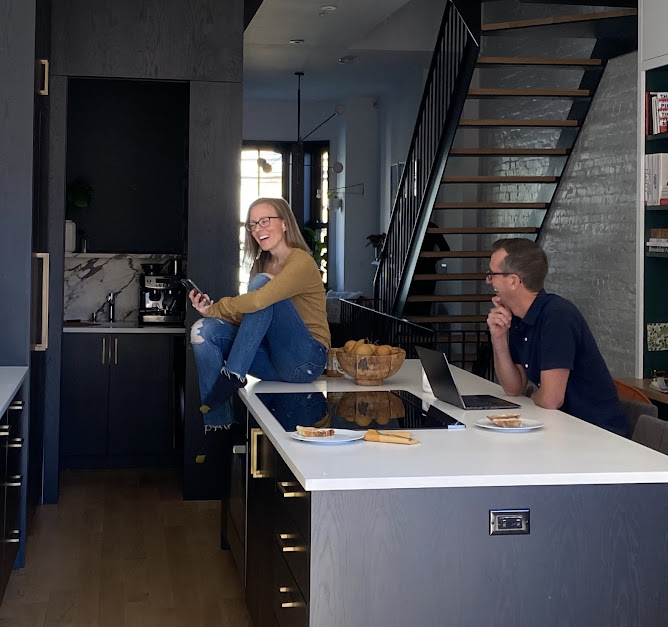Hoboken Brownstone: Steel
In the last post we talked about pouring the new basement slab... so now they were ready to start the structural work in the basement. Many brownstones in Hoboken have a beam or bearing wall that runs the length of the building to reduce the overall span for all the joists. Typically the bearing walls will create the hallways and center stair on the upper floors. Given the 24' span on this house, the beam and column support are doing more work than on say a 14' wide brownstone.
Basement looking towards front
We located the new steel columns under the beam in different locations from the existing columns so that new footings could be poured while the existing supports remained in place. You can see in the photo above that we also provided a column at the end wall because we couldn't rely on the old brick and mortar to withstand the load of the three floors and roof on a 24' wide joist span.
The undersized existing wood beam that sat below the joists was replaced with an 8" steel beam that would sit within the joist depth. This required that all the joists be cut so they could attach to the sides of the new steel beam.
Basement looking towards rear
There's a shift in the beam location that you can see here at the double column. It was required to pick up the end of each beam at the shift. This allowed the proposed wall layout at the upper floors while maintaining the existing masonry openings at the rear facade.
Double column at beam shift
Here's a photo of an old iron strap connection at the stair header that would be replaced...
Stair Header Connection
Rear window at Basement
At the First Floor, we also needed steel to keep the floor plan as open as possible. The steel columns continued up to the second floor and you can see the beam at the rear of the house where the kitchen would be. This beam was also set within the joist depth.
First Floor Structure
At the living room the existing beam had been offset from the bearings walls at the upper floors. It was too great a distance for the load to transfer, so we needed a beam to allow a generous opening from the entry into the living room as well as picking up the bearing walls above.
Living Room Steel
This column at the face of the building picks up the living room beam load rather than relying on the existing old masonry and mortar. You can also see in this photo the wood that is scabbed to the sides of the steel beam to accept the hangers of the cut existing joists.
Column Support at Front Wall
At the back of the First Floor where the kitchen would be, we wanted to open up to the backyard. A steel beam and lintel picked up the masonry load for the over 9'-0" span opening. Again, we didn't rely on existing old brick and mortar, which would have carried a significant point load at each end.
Here it is from the outside. We kept the existing masonry openings at the backdoor and adjacent double hung window, which will become a sunny office nook in the kitchen.
Where you see the big opening there had been two double hung windows. It will become one large steel window wall... but that's for another post!











